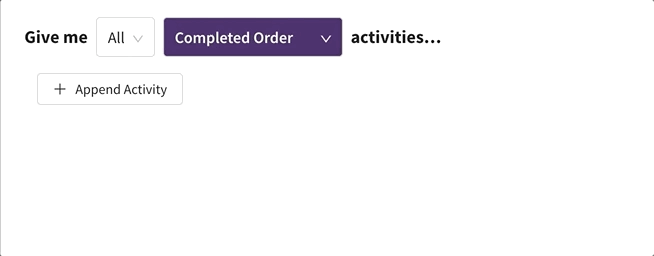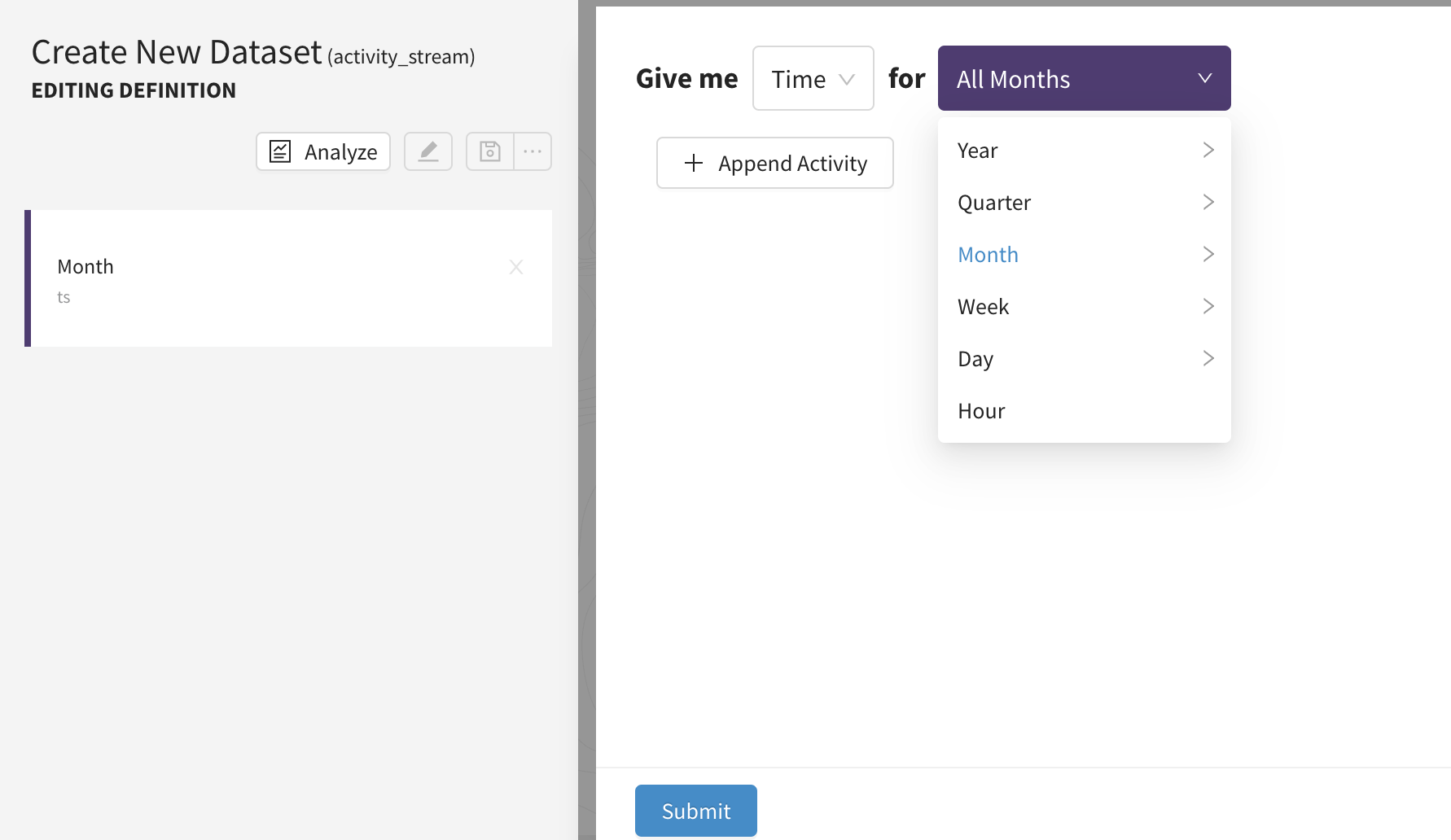Occurrence
Do you want the first activity, the Nth (second, third, etc...), the last one, or all of them?
When incorporating activities into your dataset, it is important to be specific about which of these activities you care about. A customer may complete a single activity many times. For example, they may complete an order ten times. The occurrence allows you specify which of the "completed order" activities you care about.
Occurrence Options:
- All (for primary activities)
- First
- Nth (2nd, 3rd, 4th, ... )
- Last

Chose an activity occurrence when building a dataset
How to choose occurrence
Consider the data you need in order to answer your question about your customer's behavior. Do you want the first activity, the Nth (second, third, etc...), the last one, or all of them?
Tip: Choosing first or last is how you can guarantee a unique record per customer.
Using the Time Occurrence
Time Occurrence
The time occurrence is a special type of occurrence. It can come in handy when you want to generate a dataset based on some regular time cadence, but customers aren't guaranteed to have activity during every time period. For example, Average Log-ins per week per user. A user should be counted, even if they haven't had activity in that week.
Similar to First/Last/All occurrence, you have the option to select This/Last/All time periods (ie. All months). Last and This will generate one record per user per month, while All will generate a record per user per month based on the appended activity and relationship chosen.
Examples that use Time Occurrence:
- How many active subscribers were there during the month of June?
- What is the average number of app opens per user per week?
- Up until a certain month, how much revenue has each user generated?
Still have questions?
Our data team is here to help! Here are a couple ways to get in touch...
💬 Chat us from within Narrator
💌 Email us at [email protected]
🗓 Or schedule a 15 minute meeting with our data team
Updated over 3 years ago
